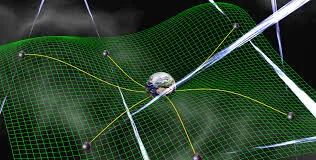This week I cover a proposal to confirm the possible Dirac nature of neutrinos exploiting a subtle correlation between cosmological and terrestrial measurements, how to determine the sound horizon and H0 from BAO independently of the details of recombination, and a possible interpretation of the recent detection of the stochastic gravitational wave background at nHz frequencies by NANOGrav as being due to cosmic strings. Enjoy and have a nice weekend!
Top arXiv papers from Week 25, 2020
This week is a bit special, and I have been debating with myself for some time whether I should have talked about the XENON electronic recoil excess we all have heard about, reported in 2006.09721 (this inner debate is one of the reasons behind my delay). Ordinarily I would have done so, but this time I opted for no, simply because there is much better coverage on the XENON result out there than anything I could possibly produce (needless to say many other popular science articles on the XENON results are instead pure junk). Natalie Wolchover is probably one of my favorite scientific journalists (by far the best among the ones I have interacted with), so for those interested in an excellent coverage of the XENON result, I recommend her piece on Quanta Magazine. Having said that, I’ve devoted this week’s entry to a new measurement of H0 from the Baryonic Tully-Fisher relation, a new neutrino mass forecast for cosmology taking into account a very subtle effect on the galaxy bias, and a study of the shadows of rotating regular black holes.
Top arXiv papers from Week 11, 2020
Springer Thesis Award!
On Tuesday I found out that my PhD thesis has been awarded a “Springer Thesis Award”! This comes with a small amount of money and, most importantly, means that my thesis will be re-published as a book and e-book as part of the Springer Theses series. This series brings together a selection of the very best PhD theses from a strictly limited number of high-ranking university research departments in the physical sciences and engineering.




